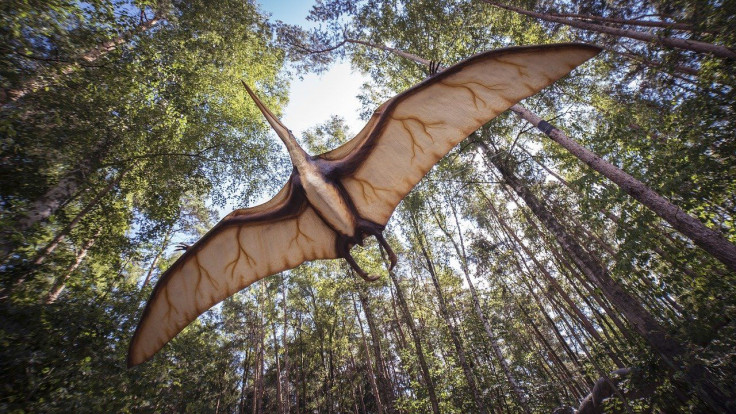Scientists Discover World's Largest Jurassic Pterosaur In Scotland
KEY POINTS
- Scientists discovered the 'best-preserved' pterosaur skeleton in Scotland
- The new pterosaur genus and species is the largest of its kind from the Jurassic
- Pterosaurs may have grown larger than previously thought, researchers noted
Scientists have identified a new pterosaur genus from fossilized remains discovered in the Isle of Skye. The excellently preserved fossil is the largest Jurassic pterosaur in the world.
The fossil was unearthed in 2017 during an excavation that was funded by the National Geographic Society, the University of Edinburgh noted in a news release.
It was first spotted by Ph.D. student Amelia Penny, who saw the jaw protruding from a limestone layer. Colleagues identified it as a pterosaur and the fossil was retrieved. It was then brought to the University of Edinburgh to be analyzed.
A spectacular fossil of a huge flying reptile, known as a #pterosaur, found by a @GeoSciences student on the Isle of Skye has been unveiled at @NtlMuseumsScot by PhD student Natalia Jagielska @WryCritic & @SteveBrusatte https://t.co/CZcDsCPsY0
— The University of Edinburgh (@EdinburghUni) February 22, 2022
In a paper published in Current Biology on Tuesday, scientists from the University of Edinburgh, National Museums Scotland (NMS) and several other institutions describe the specimen as that of a new pterosaur genus and species from the Jurassic period.
Dubbed "Dearc sgiathanach," a Gaelic name that has the double meaning "winged reptile" and "reptile from Skye," its remains are the "best-preserved" pterosaur skeleton to be found in Scotland, the University of Edinburgh noted.
"Dearc is a fantastic example of why paleontology will never cease to be astounding. Pterosaurs preserved in such quality are exceedingly rare and are usually reserved to select rock formations in Brazil and China," Natalia Jagielska, a doctoral student at the University of Edinburgh and one of the paper's authors, said in the university news release, explaining that pterosaurs' hollow bones usually make for "incredibly fragile" fossils.
"And yet our skeleton, ~160 million years on since its death, remains in almost pristine condition, articulated and almost complete. Its sharp fish-snatching teeth still retaining a shiny enamel cover as if he were alive mere weeks ago," Jagielska added.
The stunning images of the fossils can be viewed here.
Largest Jurassic pterosaur known
Dearc would have lived about 170 million years ago. Although the creature wasn't fully grown yet when it died, it would have had a whopping wingspan of 2.5 meters when fully grown, making it the largest Jurassic pterosaur in the world.
With the discovery, it appears pterosaur sizes during the Jurassic period have been underestimated, Nick Fraser of NMS, one of the paper's authors, noted in a blog post. According to Fraser, Dearc's wingspan is comparable to that of a Wandering Albatross, which is said to be the largest flying bird in the world.
Furthermore, even though previous fossil discoveries on Skye were of isolated bones or "articulated remains of smaller vertebrates," the find shows that it is also an important place for Jurassic fossils, Fraser noted.
Steve Brusatte, professor at the University of Edinburgh, even called it a "superlative Scottish fossil," adding that it may just be the "best British skeleton" to be found since the early 1800s.
Professor @SteveBrusatte, University of Edinburgh, said “This is a superlative Scottish fossil. The preservation is amazing...probably the best British skeleton found since the days of Mary Anning in the early 1800s." 🤩
— National Museums Scotland (@NtlMuseumsScot) February 22, 2022
Read more about this amazing find: https://t.co/e5y2RfcaVm pic.twitter.com/rz7bDcKukF
Dearc will now be added to National Museum Scotland's collection, but it will continue to be studied.
"To find and describe a specimen which is both so well-preserved and so significant is really special and we're delighted to add Dearc into our collection, a unique addition to the fossil record and a specimen which will be studied now and long into the future," Fraser said, as per the university news release.

© Copyright IBTimes 2024. All rights reserved.






















